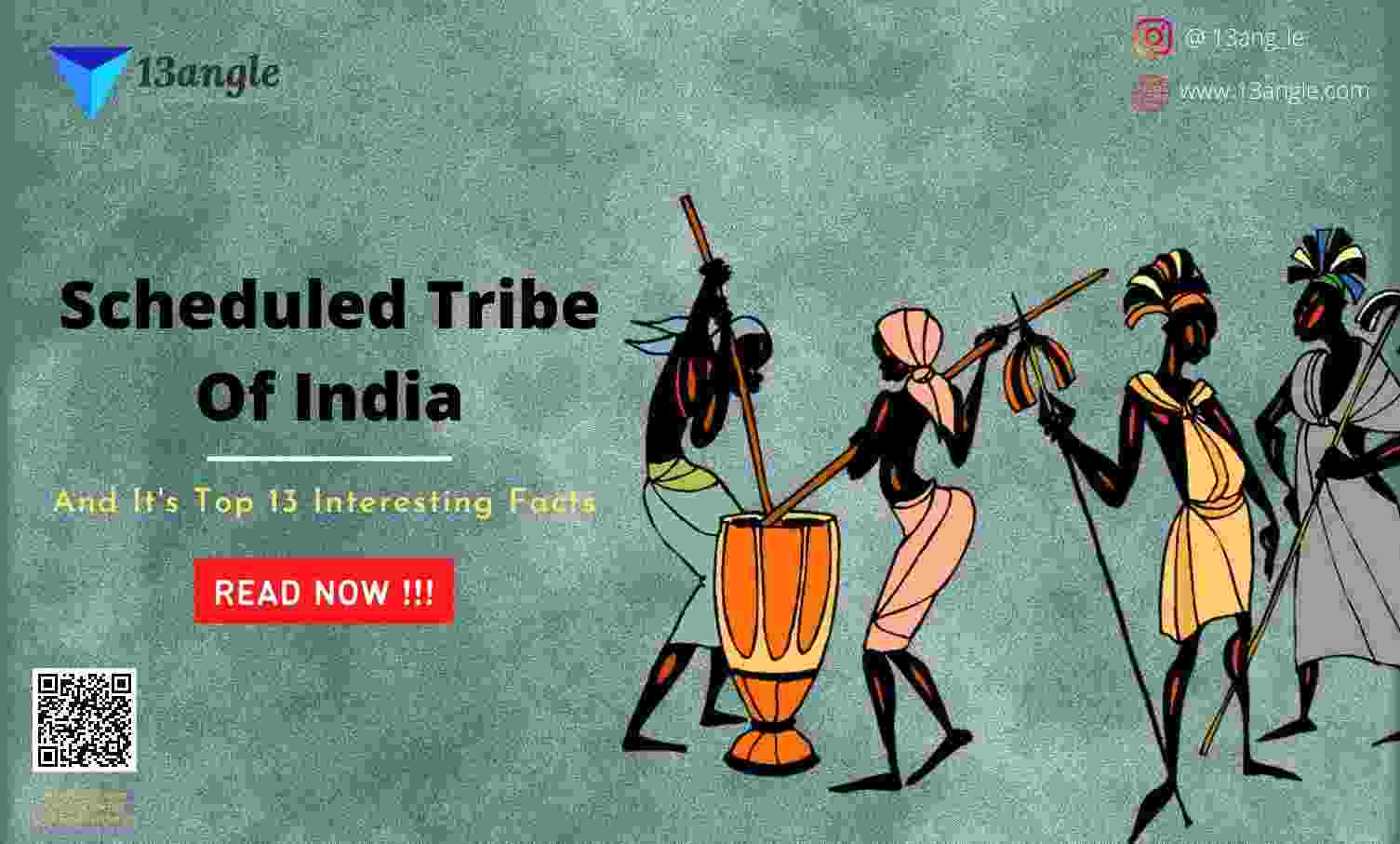- Umang Sagar
- Recent article, Religion
Scheduled Tribe Of India
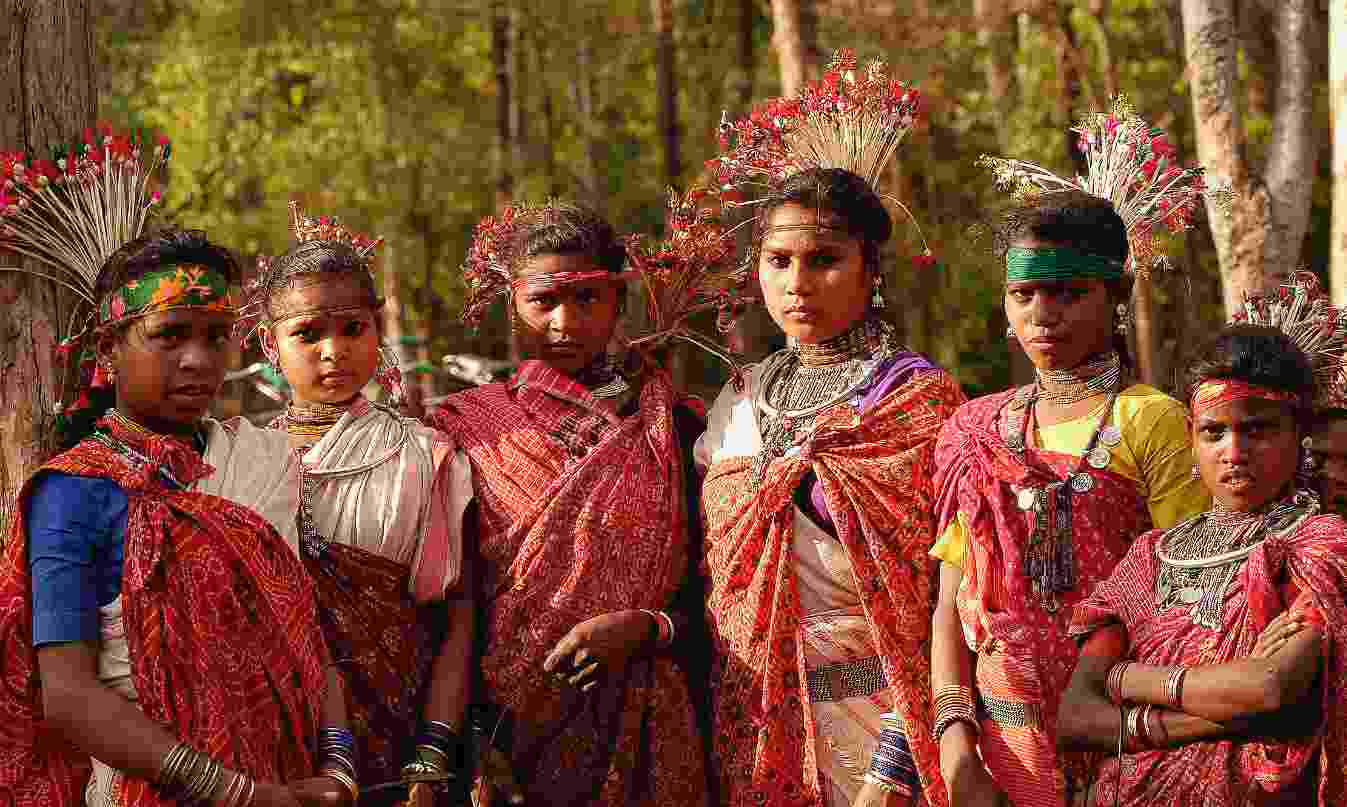
Introduction
- The term scheduled tribes first appeared in the constitution of India, in article 366 (25) defined schedule tribe as ‘such tribes or tribal communities or parts of groups within the tribes or tribal communities as are deemed under article 342 to be scheduled tribes for the purposes to fulfill the needs of scheduled tribes.’ A tribe is a social division in a traditional society consisting of families linked by social, economic, or blood ties with a common culture and dialect. The tribal are the native inhabitants of India.
What Is Meant By Scheduled Tribes?
The tribes are the autochthonous or native people of the land who are believed to be the earliest settlers in the Indian peninsula. They are generally called Adivasi’s, implying original inhabitants in ancient and medieval literature we can find many numbers of tribes were mentioned in the constitution as they were living in India.
And they were termed as scheduled tribes because the tribal community in India has been recognized by the Indian constitution under schedule 5 of the constitution. Hence the tribes in the constitution are known as scheduled tribes. The tribal population in India is around 8.6% of the total population according to the 2011 census.
Scheduled tribes are spread throughout the country largely dwelling in forest and hilly regions.
Essential Characteristics Of These Tribes Are
- Primitive traits
- Geographical isolation
- Distinct culture
- Contactless with much of the worldly affairs
History Of Scheduled Tribes In India
- The British labeled them as aboriginal, animists, adherents of tribal regions and the last but most important label used for exploitation of the tribal was ‘criminal’ the native people were labeled as a criminal tribe, to suppress them, but not for long the first uprising against the British rule came from the tribal some of the rebellion was as follows:-
1. Mal Paharia: Mal Paharia people are from Dravidian ethnic people of India, mainly living in the states of Jharkhand and West Bengal, they were the original inhabitants of the Rajmahal hills known today as the Santhal Parganas division of Jharkhand. The problem was worsened during the Bengal famine of 1770 which the Mal Paharia were not affected due to the reliance on forest products, but after that, the British government do not let them use their forests, so they started a rebellion against the British government as they wanted to protect their land and living.

2. Rampa Rebellion: Alluri Sitaram Raju was born on July 4, 1857, in Mogallu village of Palakodaru Mandal in Andhra Pradesh. He started the Rampa rebellion known as ‘Manyan Veerudu’ or hero of the forest. Along with the tribal he framed an attack on the Chintapalli police station, as well as on Krishna Devi Peta in August 1922. They snatched the weapons and armory of the British. He also launched Guerrilla warfare against the British for their exploitation and suppression. On July 4 Prime Minister Narendra Modi unveiled a 30-foot-tall bronze statue of Alluri Sitaram Raju on his birth anniversary in Andhra Pradesh.
3. Bhills Revolt: The Bhills were mostly concentrated in the hill ranges of Khandesh. In 1818, the first uprising undertaken by a tribal group in the country was under the Bhills tribe as the East India company denied them their traditional forest rights and exploited them. This is a region of Maharashtra and the local Bhills tribe was not at all in the position to accept any change within their territory by the British, so they started the revolts.
4. Kol Rebellion: The Kol uprising sometimes known as Kol mutiny in British records was a revolt by the Adivasi of the Chota Nagpur plateau. The Kol are indigenous peoples from the Chota Nagpur area, they revolted against the British government in response to economic exploitation in terms of land tenure and administrative system.
5. Khonds Rebellion: Khonds uprising took place in Orissa in 1846 and 1855. The Khonds people were led by Chakra Bisoi. The Khonds in Orissa played a vital role in preparing the revolt of 1857 against the British Government. Their mutiny included tribes from Ghumsar, China Ki Medi, Kalahandi, and Patna.
6. Santal Revolt: Santhal were the agricultural people settled in the Rajmahal hills of Bihar. British turned to them for the expansion of the revenue through agriculture, which gradually British started exploiting. Local landlords occupied Santhal lands and exploited them. Sidhu and Kanhu Murmu of the Santhal tribe organized the rebellion of 1857 against the British government.
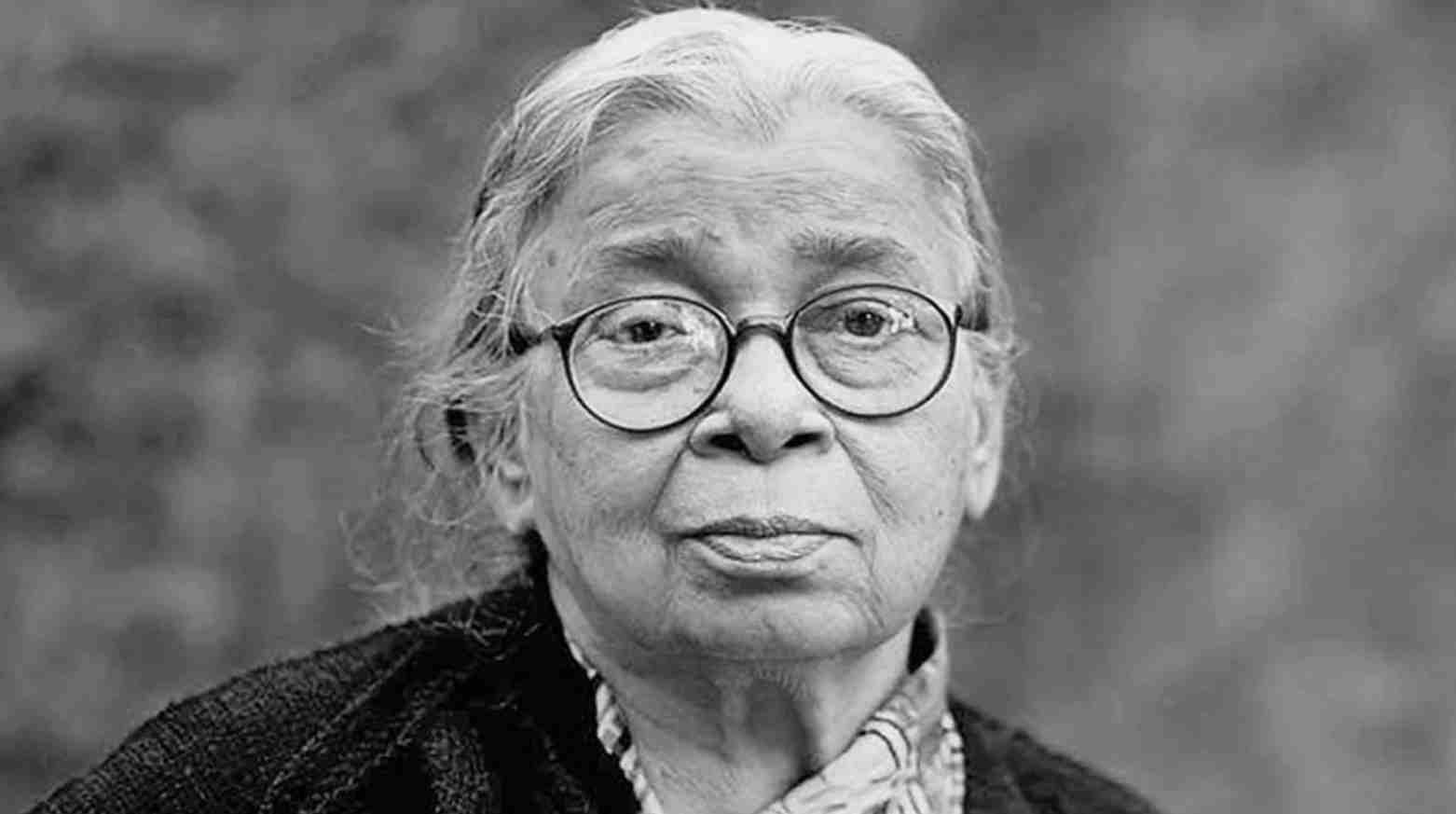
7. Post-1857 Revolt: The sabar people are one of the Adivasi tribes of the Munda ethnic group tribe who live mainly in Odisha and West Bengal. During the colonial period, the British developed the second colonial template of giving a dog a bad name and hanging him to delegitimize and destroy the untameable Hindu communities. Thus came the criminal tribe’s act in 1871 and the tribes suffered from social stigma and ostracism in modern independent India too. The criminal tribe’s act was initially applied in Northern India and then extended to the rest of the country.
Communities were presumed guilty by birth, liable to be arrested on mere sighting, at the time of independence in 1947 they still got the tag of the criminal tribe of India. Mahasweta Devi saw they are still regarded as criminals and being arrested and tortured by police. She questions their criminality trying to lift them from utter poverty and alienation. At the sabar Mela in Purulia in 1983, she was anointed ‘Sabarer Ma’. She was a renowned writer and activist who had a deep respect for tribal life and culture.
Article 342
The President May with respect to any state or union territory and where it is a state after consultation with the Governor thereof, by public notification specify the tribes or tribal communities or parts of or groups within tribes or tribal communities which shall for the purpose of the constitution be deemed to be scheduled tribes in relation to that state or Union territory.
Parliament may by law includes in or exclude from the list of scheduled tribes specified in a notification issued under clause (1) any tribe or tribal community or part of a group within any tribe or tribal community but save as aforesaid a notification issued under the said clause shall not be varied by any subsequent notification PART XVIII official language chapter I language of the Union.
Particularly Vulnerable Tribal Group
- It is a sub-classification of scheduled tribes or sections of scheduled tribes, that are most vulnerable in certain parameters than others. The government of India created a particularly vulnerable tribal group list with the purpose of enabling improvement in the conditions of those communities on a priority basis. The Dhebar commission stated within scheduled tribes there existed an inequality in the rate of development. At the conclusion of the sixth five-year plan 20 groups were added and 2 more in the seventh five-year plan, one more added in the eighth five-year plan, making a total of 75 groups recognized by PTG. In 2006 the government of India proposed to rename it from a primitive tribal group (PTG) to a particularly vulnerable tribal group.
Location | Primitive tribal groups |
Andhra Pradesh and Telangana | Bodo Gadaba, Bondo porja, Chenchu, Dongria khond, Gutob Gadaba, khond Porja, Kolam, konda Renddi, Konda savara, kutia khond, parengi Porja, Thoti. |
Bihar and Jharkhand | Asur, Birhor, Birjia, khariya, korwa, mal, paharia, pahariya, sauria pahariya, sabar |
Gujarat | Kathodi, kolgha, kotwalia, padhar, siddi |
Karnataka | Jenu kuruba, koraga |
Kerala | Kadar, koraga, kattunayakan, kurumba |
Madhya Pradesh and Chhattisgarh | Baiga, Bharia, Birhor, Hill korwa, Kamar, saharia |
Maharashtra | Kathodi, kolam,Maria gond |
Manipur | Maram Naga |
Odisha | Birhor, Bondo, chuktia Bhunjia, Didayi, Dongria khond, Juang kharia, kutia khond, lanjia saura, lodha, mankidia, paudi Bhuyan |
Rajasthan | Saharia |
Tamil Nādu | Irular, laltu Nayakan, korumba, Kota, paniyan, Toda |
Tripura | Riang |
Uttarakhand | Buksa, Raji |
West Bengal | Birhor, lodha, Toto |
Andaman and Nicobar Islands | Jarawa, Onge, Sentinelese, shom pen |
Classification Of Scheduled Tribes State-wise On The Basis Of Location:
Location | Tribes |
Andhra Pradesh | Andh, sadhu andh, bhagata, Bhil, Chenchus, Gadabad, Gond, Jatapus, kammara, Kattunayakan, kolawar, kolam, konda, Manna Dhora, pardhan, Rona, savaras, Dabba yerukula, Nakkala, Dhulia, Thoti, Sugalis, Banjara, Koya, mukha dhora, Valmiki, yenadis, Sugalis lambadis. |
Arunachal Pradesh | Apatanis, abor, dafla, galong, momba, sherdukpen, singpho, nyishi, mishmi, idu, Taroan, Tagin, adi, monpa, wancho |
Assam | Chakma, chutiya, dimasa, hajong, garos, khasis, gangte, karbi, boro, borokachari, Kachari, sonwal, Miri,rabha, goro. |
Bihar | Asur, baiga, Birhor, Birjia, chero, gond, parhaiya, santhals, savar, kharwar, Banjara, oraon, santhal, tharu |
Chattisgarh | Agariya, Bhaina, Bhattra, khond, marwari, nagasia, Gond, Binjhwar, halba, halbi, kawar, sawar. |
Goa | Dhodia, dubia, naikda, siddi, varli, gawda |
Gujarat | Barda, bamcha,bhil, Charan, dhodia, gamta, paradhi,patalia,dhanka, dubla, talavia, Halpati, kokna, naikda,patelia, rathawa, siddi. |
Himachal Pradesh | Gaddis, Gujjars,khas, lamba, lahaulas, pan gwala, swangla, beta, beda bhot, bodh. |
Jammu and Kashmir | Bakarwal, balti, bada, gaddi,garra,mon, purigpa,sippi,changpa. |
Jharkhand | Birhors, bhumij, gonds, kharia, mundas, santhals, savar, badia, ho, kharwar, lohra, mahli , parhaiya, santhal, kol, banjara |
Karnataka | Adiyan, barda, gond, bhil iruliga, koraga,patelia, yerava, hasalaru, Koli dhor, marati, meda, naikda, soli garu. |
Kerala | Adiyan, arandan, eravallan, kurumbas, malai arayan, moplahs, uralis, irular, kanikaran, kattunayakan, kuruchchan, mathuvan. |
Madhya Pradesh | Baigas, bhills, Bharia, birhors, gonds,katkari, kharia, khond, kol, murias, korku, mawasi, pardhan, sahariya. |
Maharashtra | Bhaina, Bhunjia, dhodia,katkari, khond, rathawa, warlis, dhanka, halba, kathodi, kokna, Koli mahadev, pardhi, thakur |
Manipur | Naga, kuki, meitei, aimol, angami, chiru, maram, monsang, paite, purum, thadou, anal, mao, tangkhul, thadou, poumai Naga. |
Meghalaya | Chakma, garos, hajong, jaintias, khasis, lakher, pawai, raba, mikir. |
Mizoram | Chakma, dimasa, khasi, kuki, lakher, pawi, raba, synteng, lushai. |
Nagaland | Angami, garo, kachari, kuki, mikir, nagad, sema, ao, chakhesang, konyak, kotha, phon, rengma, sangram. |
Odisha | Gadaba, ghara, kharia, khond, matya, oraoans, rajuar, santhals, bathudi, bathuri, bhottada, bhumij, gond, Juang, kisan , kolhai, kora, khayara, Koya, Munda, paroja, saora, shabar, lodha. |
Rajasthan | Bhilai, damaria, dhanka, meenas, patelia, shariya, naikda, nayaka, kathodi. |
Sikkim | Bhutia, khas, lepchas, limboo, tamang |
Tamilnadu | Adiyan, aranadan, eravallan, irular, kadar,kanikar, kotas, todas, kurumans, malayali. |
Telangana | Chenchus |
Tripura | Bhil, bhutia, chaimal, chakma, halam, khasia,lushai, mizel, namte, mag, Munda, riang. |
Uttarakhand | Bhotias, buksa, jannsari, khas, Raji, tharu |
Uttar Pradesh | Bhotia, buksa, Jaunsari, kol, Raji, tharu, gond, kharwar, sahariya, parahiya, baiga, agariya,chero. |
West Bengal | Asur, khond, hajong, ho, parhaiya, rabha, santhals, savar, Bhumij, Bhutia, Chik Baraik, kisan. |
Andaman and Nicobar Islands | Oraons, onges, sentinelese, shompens,jarawa. |
National Commission Of Scheduled Tribes
- It was set up with effect from 19th February 2004 by amending article 338 and inserting a new Article 338A in the constitution through the 89th constitution Amendment Act 2003, hence it is a constitutional body. It oversees the implementation of various safeguards provided to scheduled tribes under the constitution to investigate and monitor all matters relating to the safeguards provided for the scheduled tribes, to inquire into the specific complaints with respect to the deprivation of rights and safeguards of the scheduled tribes. It ensures participation in the socio-economic planning of the scheduled tribe’s Development. It has consisted of three members and a chairperson and vice chairperson who are appointed by the President of India, one of the three members should consist of one woman.
Ministry Of Tribal Affairs
- The Ministry of Tribal Affairs is responsible for the overall development of the scheduled tribes in India. This Ministry was set up in 1999 after the bifurcation of the Ministry of social justice and empowerment with the objective of providing a more focused approach to the integrated socio-economic development of the most underprivileged sections of Indian society, in a coordinated and planned manner. The ministry shall be a nodal ministry for overall policy planning and coordination of programs of development for the scheduled tribes.
- As a division of the Ministry of Home affairs named tribal division it started with independence in September 1985.
- Then it came to be known as the Ministry of welfare which started from September 1985 to May 1998.
- And then came to be known as the Ministry of social justice and empowerment from May 1998 to September 1999.
Rights Given To The Scheduled Tribes By The Constitution
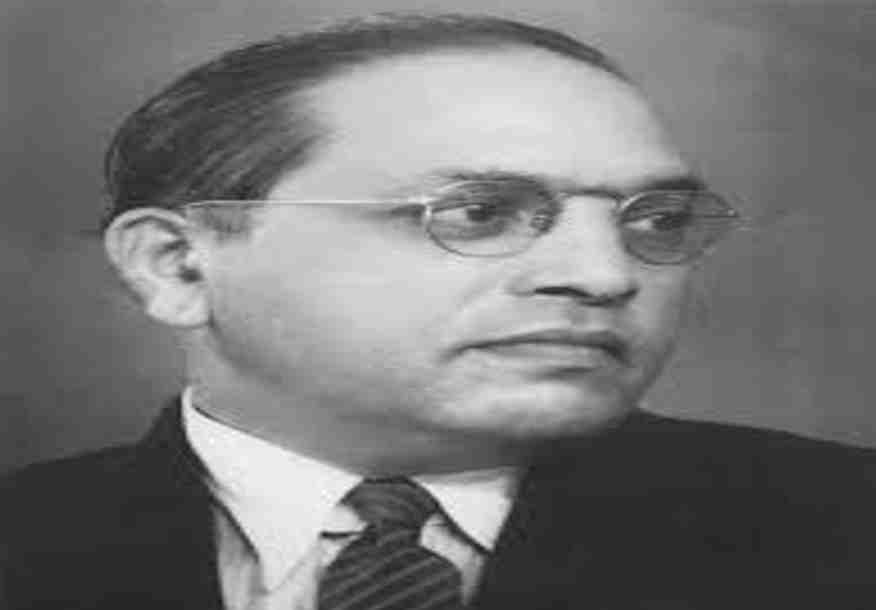
The scheduled tribes are the disadvantaged group of people in India. Dr. B. R. Ambedkar in the Drafting committee drafted the constitution of India in 1950, to balance the caste system in society and to safeguard the rights of the scheduled tribes as they were treated as untouchables.
Here are some rights given to safeguard the interest of the scheduled tribes.
Social safeguard is given under article 23 as it forbids child labor.
Economic safeguards: article 275 grants in aid to specified states covered under the fifth and sixth schedules of the constitution for the development of scheduled tribes.
Article 23 safeguards the scheduled tribes from human trafficking.
Article 46 under directive principles of state policy grants the promotion of education and economic interests of the scheduled tribes and other weaker sections of the society, the state shall promote with special care the educational and economic interests of the people and protect them from social injustice or any form of exploitation.
Article 335 under the special provision for scheduled tribes to services and posts regarding relaxation of qualifying marks in any exams or lowering the standards of evaluation and reservation of posts.
Under Article 15(4) reservations in any educational institutions for scheduled tribes are backed by the constitution.
Under Article 16(4), 16(4A), 16(4B) reservations in posts and services are given to the scheduled tribes.
Political safeguards:
- Under article 243D reservations in the panchayat level for scheduled tribes are mentioned.
- Under article 330 reservations in the House of people for the scheduled tribes are mentioned.
- Under article 332 reservations in the legislative assembly of the state for the scheduled tribes are mentioned.
- Under article 334 reservations in Lok Sabha and in state Vidhan Sabha for the scheduled tribes are mentioned.
- Special provisions under article 164(1) are present for Jharkhand, Chhattisgarh, Madhya Pradesh, and Odisha, for the welfare of the tribal people under the ministry in charge of tribal welfare.
- Article 371A has a special provision for the welfare of the people living in Nagaland.
- Article 371B has a special provision for the scheduled tribes living in Assam.
- Article 371C has a special provision for the scheduled tribes living in Manipur.
- Article 371F has a special provision for the scheduled tribes living in Sikkim.
First Tribal President Of India
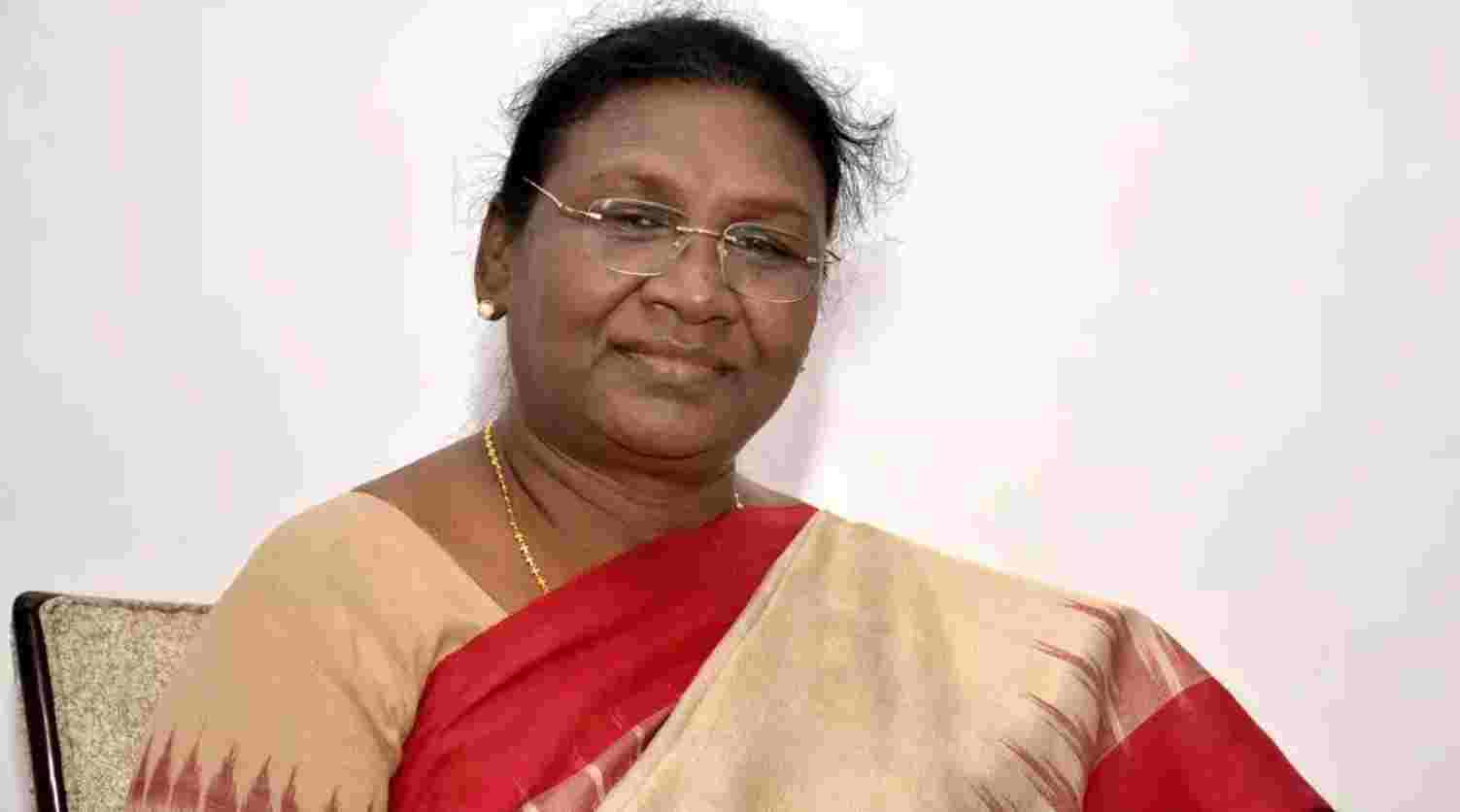
- Droupadi Murmu won the presidential election and created history by becoming the first tribal to occupy the top constitutional position. Murmu is the second woman to reach the Rashtrapati Bhavan and will be the 15th President of India. She is 64 now but still, she is the youngest President of India. Murmu was born on June 20, 1958, in Uparbeda village of Mayurbhanj district in Odisha in a Santhali tribal family to Biranchi Narayan Tudu, her father and Grandfather were village heads under the panchayat Raj system. She married Shyam Charan Murmu a banker who died in 2014. Murmu started as a schoolteacher before she entered politics.
Pattachitra
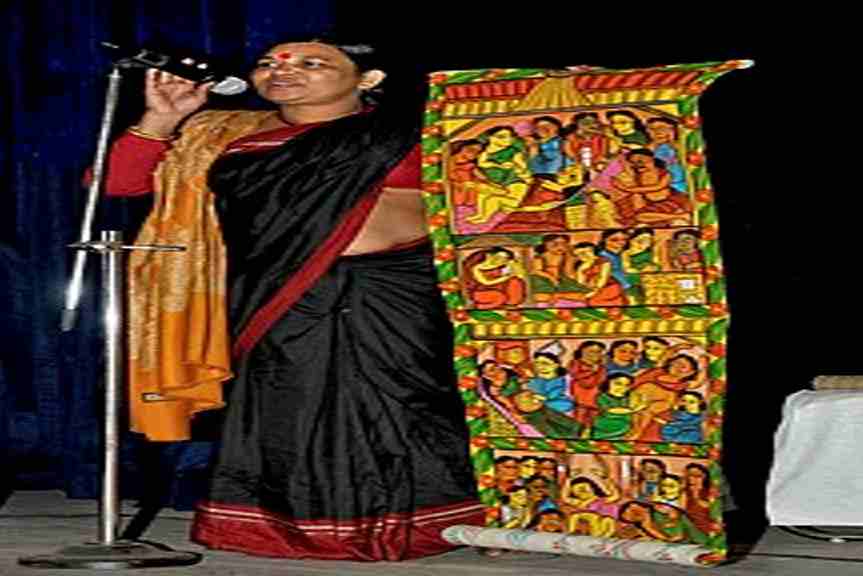
The Bengal Pattachitra is a visual and oral art tradition practiced by the Patuas or Chitrakaars of West Bengal. Santhali Pattas (scrolls) is a document of the day-to-day life of the Santhals, a tribal community from East India. These Pattas are also known as Jadu Patta, the artists who create them are called Jadu Patuas. This scroll depicts the birth story of the Santhal tribe, it includes stories of fishes, animals as well as nature.
Pattachitra evolved from Sanskrit when broken down into two parts Patta means cloth and Chitra means picture. It is a Bengali narrative art that originally serves as a visual device during a performance of a song. Some of the types of Pattachitra are Durga pot and Chalchitra.
It is based on mythology, folk Lore, and social causes it depicts bus accidents, family planning, and many other social causes that make the other tribal people about the social problems. The last tradition of Pattachitra was developed by Jamini Roy.
Jamuna Tudu
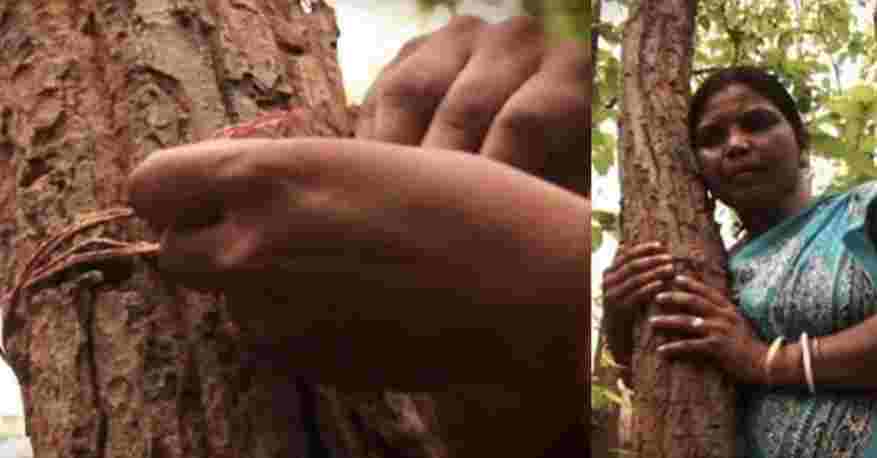
Jamuna Tudu tribal women with 60 other women dedicated their lives to protecting the trees from the plundering clutches of forest mafia and poachers, they tied a thread around the trees and promised to protect the trees as in Rakhsha Bandhan brother promised to protect sisters, they, in the same way, will protect the trees.
They take turns patrolling through the forest in the morning, afternoon, evening even at night. She kept monitoring her community about the conservation of the forest and not overuse the forest until she managed to raise a band of 25 women and formed the Van Suraksha Samiti fortified with bows and arrows as well as spears to tackle the enemies. Impressed by Jamuna and her community the forest department ended up adopting Muturkham and former President Shri Pranab Mukherjee invited her to Rashtrapati Bhavan to appreciate her efforts.
Padma Shri Tulsi Gowda
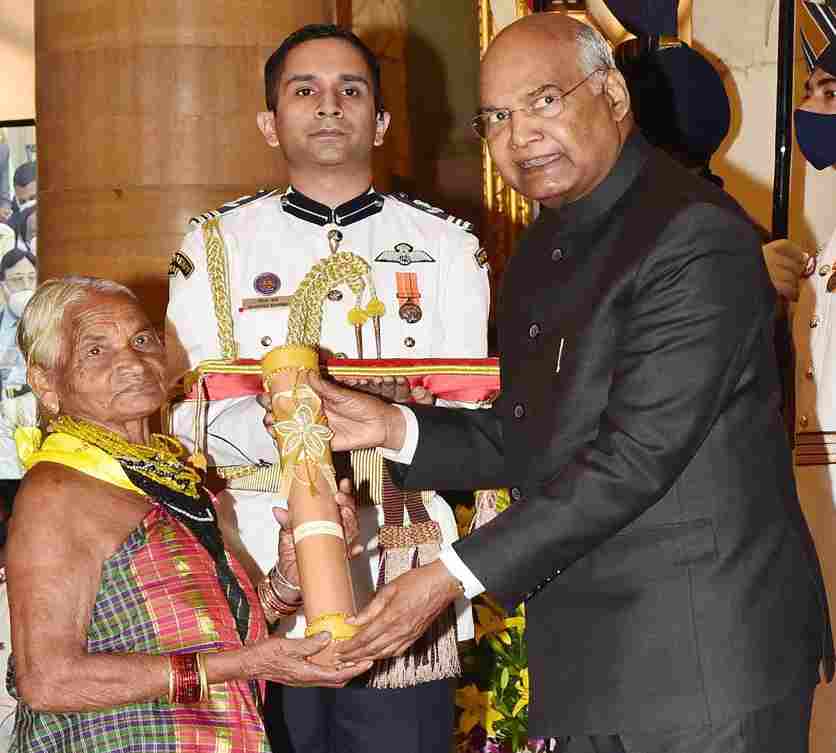
- President Ram Nath Kovind presented the Padma Shri award to Tulsi Gowda, she is an old environmentalist. She is from Honnali village in Karnataka, and had planted more than 30,000 saplings, she received the award barefoot in her traditional attire and greeted Prime Minister and President. Gowda belongs to Halakki Tribal in Karnataka known as the ‘encyclopedia of the forest’ due to her vast knowledge of diverse species of plants and herbs.
Top 13 Facts About Scheduled Tribes
Mru tribe of West Bengal is mostly found in Jalpaiguri district, they are engaged with traditional agriculture mainly and festivals are an integral part of the tribe.
Oraon tribe in west Bengal is one of the biggest tribes in the whole of south Asia, they converse with each other in Kurukh language, and they belong to the Dravidian family.
Various crafts can be seen in Jharkhand which includes bamboo crafts, and Pitkar paintings, all this artistic beauty was created by the tribal groups present there.
Dokra is the ancient metal craft mainly created by the artistic community of Malhar and Tenti tribes of Jharkhand.
Gonds are one of the major tribal groups in central India, they still follow the tradition of nature worship. An inter-tribal god of Gond known as Buddhadeo lives in a saja tree and believes to be the creator of the universe and the giver of life and death.
Chau dance is one of the famous tribal dances in West Bengal.
Santhali tribe is the third largest tribe in India. They dance along with folk songs during the Karam festival which is a marking of the end of the rainy season.
Kalbelia tribal dance of Rajasthan both men and women perform this dance form during festivals and marriages.
For tribal people bank account is a boon, as they can get rid of money lenders who exploited them and on the other hand, NREGA aid and other benefits can be received by them. NABARD ensures that bank accounts, Loans for people in remote areas with the help of different NGOs, as the government wants to include them in the financial programs.
They can take up to 5,000 small loans in remote areas also.
National fellowship and scholarships for higher education are given to the scheduled tribes whose family income is less than 6lakhs, they should be 12th passed and they can get up to 28,000 per month. They can apply for this scholarship online portal of the National Scholarship Portal.
After years of struggle because of discrimination and torment Government of India codified the primary rights of forest-dwelling tribes and other traditional forest dwellers by the Forest Rights Act 2006.
Government initiative proper plans for the development of the tribal groups and they are also entitled to access the biodiversity as a community related to the biodiversity by birth.



